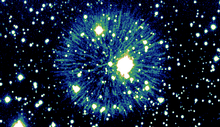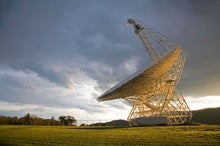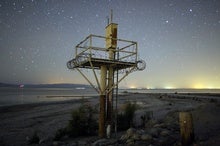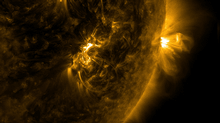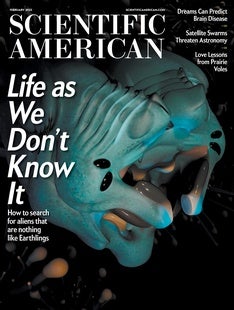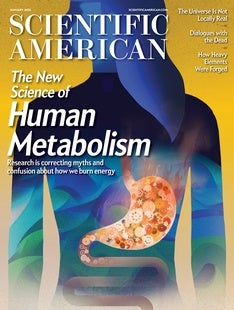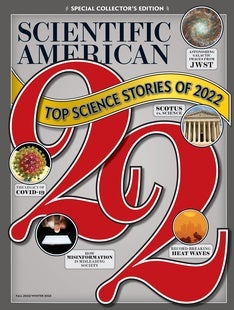 |
| February 02, 2023 |
Hello Readers, I'm filling in for Lee Billings today. This week, we cover a monumental discovery in subatomic physics: Measurements of how the so called strong force field fluctuates over short distances. The strong force is a rarely seen foundational influence on subatomic particles (holding together protons and neutrons) which is difficult to observe in action, and harder to predict mathematically. Read more about the implications of this finding below! Elsewhere, astronomers are watching remnants of an exploded supernova, and it's like nothing they've seen before. Enjoy! |
| | Andrea Gawrylewski, Chief Newsletter Editor
| |
 |
| |
| |
| Extraterrestrial Life Will an AI Be the First to Discover Alien Life? SETI, the search for extraterrestrial intelligence, is deploying machine-learning algorithms that filter out Earthly interference and spot signals humans might miss | | By Alexandra Witze,Nature magazine | | | |
| |
| |
| Astrophysics Should You Really Worry about Solar Flares? The sun is unleashing powerful outbursts that could strike Earth, but these events are far more common—and much less worrisome—than some hyped headlines suggest | | | | |
| Space Exploration What Time Is It on the Moon? Satellite navigation systems for lunar settlements will require local atomic clocks. Scientists are working out what time they will keep | | By Elizabeth Gibney,Nature magazine | | | |
LATEST ISSUES
 |
| |
| Questions? Comments?  | |
| Download the Scientific American App |
| |
| |



